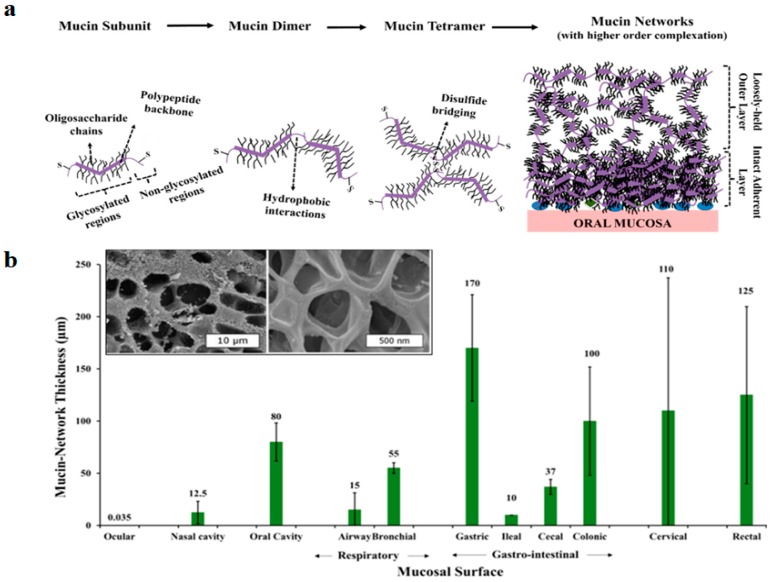Figure 1.
Characteristics of the mucin network from different mucosal surfaces. (a) Progression of higher order complexation of mucin glycoproteins resulting in the formation of a mucin network over an oral mucosal surface. This scheme demonstrates the progression of a high-order complexation process, which results in the formation of mucin aggregates. Mucin aggregates invariably contain two-distinct zones: the more intact adherent mucin layers, and loosely-held (expanded) mucin layers of high free-volume. (b) Mucin network thickness in the respiratory and gastrointestinal mucosa; thickness is expressed in µm. Mucin network thickness varies according to its physiological location and role. Inset figure shows cryo-SEM imaging of pulmonary mucin, demonstrating heterogeneous mesh size distribution [29].

